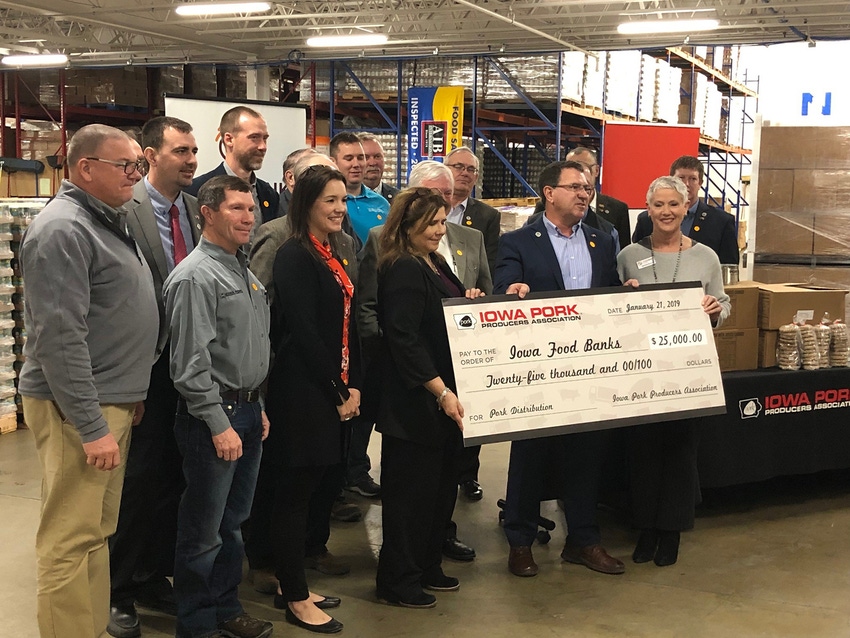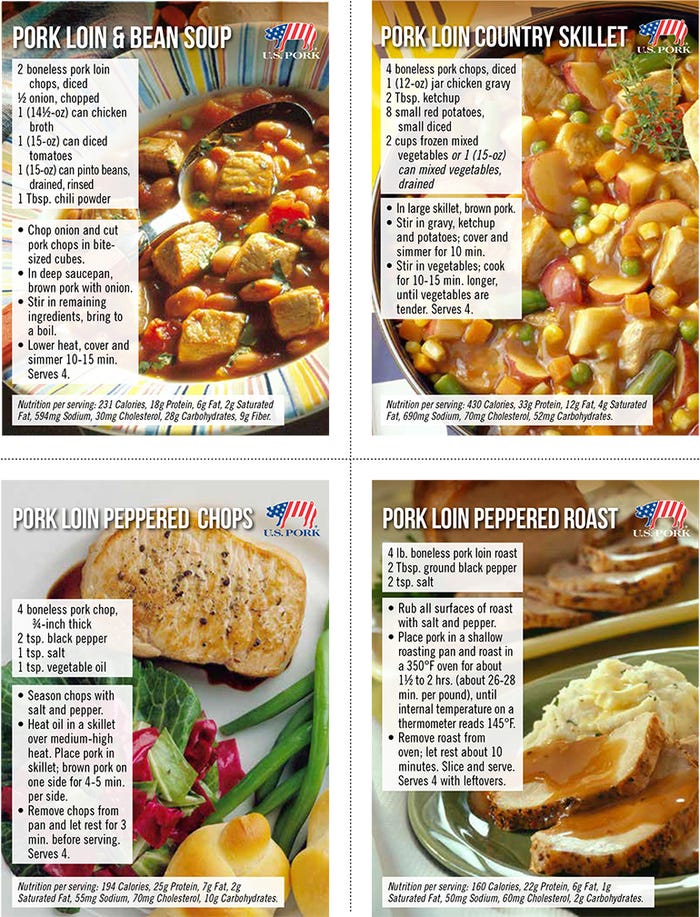As of Jan. 28, more than $113 million in pork products, ranging from pork patties and pork taco filling to sliced ham and pork chops, has been delivered to food banks across the country.

Back in the spring of 1999, the National Pork Producers Council worked with the USDA to get a $50 million bonus purchase of pork on to the budget. This was on top of the $45 million to $55 million the USDA purchases in pork annually, and it was the largest bonus buy they had ever done.
Then came the 2018 trade wars with China, Canada and Mexico.
“If you think about this $558 million, which is 10 times the largest that has been done, it’s huge,” says Dallas Hockman, vice president of Industry Relations for the NPPC. “But it is very good because it ultimately gets protein — which is the No. 1 deficit for food banks — to needy people and at the same time it helps producers in the short-term. It also fits our overall We Care commitment because it is giving back to the community and working with the community.”
Of the $1.2 billion in commodities the USDA Agricultural Marketing Service has purchased, pork is by far the largest. The protein accounts for 45% of the food purchase and distribution program that began in December 2018 and will last until December 2019. The program is one of three Secretary of Agriculture Sonny Perdue announced back in July to aid farmers in response to trade damage from unjustified retaliation.
“We didn’t want to do something that would replace pork being sold some place else,” Hockman says. “That was the idea of this and because pork was the sharp point of the spear in these negotiations and suffering the biggest impact as it relates to the commodity side of the equation, that’s the reason we received the large amount we did.”
It’s also the first time the USDA has purchased pork just for food banks.
According to Michelle Book, president and CEO of Food Bank of Iowa, the state’s food insecurity rate is 11.5%, which equates to about 360,000 people struggling with food insecurity at any given time. There are five Feeding America food banks in Iowa that cover all 99 counties and work with over 1,000 small front-line agencies which distribute much-needed food directly to the end-user. Canned tuna, canned chicken and peanut butter are the typical proteins that can be found on food bank shelves. While they have received pork donations from companies such as Smithfield and Hormel before, they rarely receive USDA pork.
“We are grateful to National Pork for their negotiations at the trade mitigation table and pleased they were able to get pork on the trade mitigation product list. Since we rarely receive pork from the USDA, this is huge. This is a really big deal for the people served by Iowa’s Feeding America food banks,” Book says. “I hope that after we receive our last trade mitigation shipment of pork, we will continue to get pork from the USDA. I encourage pork producers to work with the USDA now to ensure pork is a commodity food mainstay in the future.”
As of Jan. 28, more than $113 million in pork products, ranging from pork patties and pork taco filling to sliced ham and pork chops, has been delivered to food banks across the country. Hockman says the products offered to the food banks really have nothing to do with the type of products that were being exported, but more from the concept of what could be done to help pork producers now, is already approved for USDA Food and Nutrition Service distribution and is available in the supply chain.
The NPPC was able to insert one new product into the program though, the fresh pork loin.
“The idea being is we needed some help with that category, that product, so what could we do to help benefit the overall cutout and boost the sales of that product as well as provide a nutritious product to the food banks,” Hockman says.
To help move more pork off the food bank shelves, NPPC, along with the National Pork Board, provided recipes for the products given to food banks and educational tools about the proper way to cook pork.

Book says the recipes have been helpful to the food pantry system. “Most of the folks served by food pantries are elderly, disabled or employed. Those who are employed may be working two to three part-time jobs to get by and they are dealing with transportation and daycare issues. They just don’t have a lot of time to plan, shop and cook. Recipes have to be tasty and easy to prepare and those provided by the pork producers are spot on,” Book says.
Book worked with the Iowa Pork Producers Association to not only get printed recipes but also to upload recipes onto the Food Bank of Iowa website to share with agency partners as food pantry staff are often front and center, guiding attendees and helping them select products.
“Somebody might look at a pork loin or ground pork in the freezer and walk right by it, because they don’t know how to prepare it,” Book says. “When our agency partners are armed with good simple recipes, they can say ‘This is how you prepare it and it is going to be easy. We have the other ingredients you need to help you do this at home.’”
Some state associations have also joined the effort in helping food banks handle the pork donations more smoothly. The IPPA recently donated $25,000 to Feeding America food banks operating in Iowa to help with the overall storage and distribution.
“This is a big lift for the food banks because they are not used to getting this much product in, so cold storage, freezer capacity, distribution and shipping of this product to rural areas is a challenge,” Hockman says. “We are encouraging our state associations to work with the food banks and help out where they can in that process.”
Book says pork patties are flying out the door now at her Iowa locations. While holidays and summers are typically their busiest times, last month the food banks saw an increase in attendees with the government shutdown. She knows there will be a lot of disappointed people at Food Bank of Iowa partner locations if trade mitigation distribution ends and pork disappears.
She also recognizes the program is supporting the nation’s hard-working producers.
“I want to thank all the dedicated hard-working farmers out there. I know you are committed to producing a high-quality nutritious product and you are doing so in an environment where you can’t always control what happens — trade being one of those things,” Book says. “I appreciate you are hanging in there and that we have nutritious pork products in our freezer and on our shelves.”
About the Author(s)
You May Also Like





